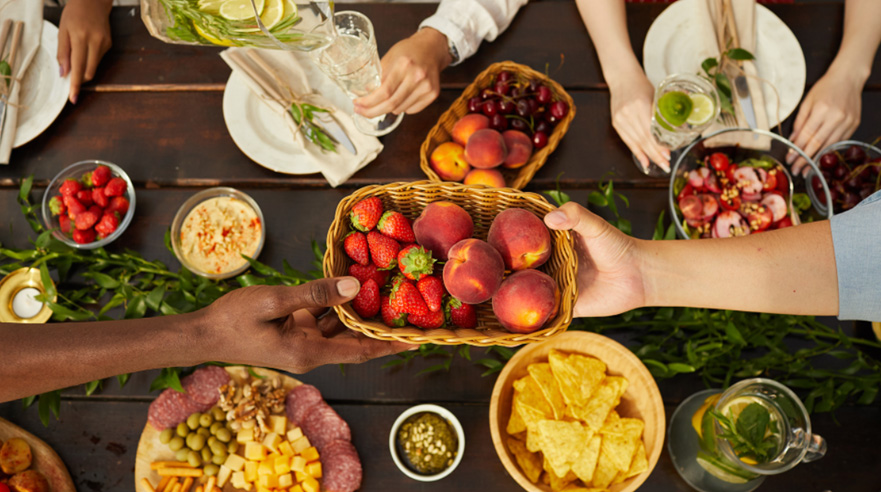National Nutrition Month: Food Connects Us
March is National Nutrition Month. This year’s theme, “Food Connects Us,” challenges us to reflect on how the foods that we eat impact us throughout our lives. Just like college basketball’s March Madness or wearing green on St. Patrick’s Day might bring us together, food connects us, too. Food connects us to our cultures, our friends and our families.
How Do We Connect with Food?
A great first step to connecting with food is by preparing your own meals and snacks and learning about how the ingredients you eat were grown or raised. You might visit a farm or a farmer’s market in Polk County or consider starting your own garden. Learning about community resources such as Supplemental Nutrition Assistance Program (SNAP), Women, Infants and Children (WIC) and local food banks might also be a great way to connect with food. It also is fun to learn about the history of foods. Here, you can find some interesting facts about food:
- Did you know that unlike most fruits, pears ripen better off the tree? They do not ripen on the tree.
- Strawberries are the only fruit that have their seeds on the outside.
- Many of the nutrients in a potato are located just below the skin; the same is true with the avocado.
- In October 1995, the potato became the first vegetable to be grown in outer space.
- Peanuts, despite their name, are not nuts. They grow underground instead of on trees and are classified as legumes, which means they grow in a shell or pod.
- You can make your own brown sugar at home by mixing one cup of granulated sugar with two teaspoons of molasses.
Build the Connection Across All Stages of Life
Essential nutrients play a role across all ages. For example, protein is often a focus for athletes, but older adults also need to get enough to help reduce muscle mass loss as a part of aging.
 According to the Scientific Report of the 2025 Dietary Guidelines Advisory Committee, a pattern has emerged from the research: diet is consistently related to beneficial health. The following foods support a healthy dietary pattern for individuals ages 2 and older:
According to the Scientific Report of the 2025 Dietary Guidelines Advisory Committee, a pattern has emerged from the research: diet is consistently related to beneficial health. The following foods support a healthy dietary pattern for individuals ages 2 and older:
- Vegetables
- Fruits
- Legumes (i.e. beans, peas, lentils and peanuts)
- Nuts
- Whole grains
- Fish/seafood
- Vegetable oils that are higher in unsaturated fat
The diet is also lower in the following:
- Red and processed meats
- Sugar-sweetened foods and beverages
- Refined grains
- Saturated fat
Some of the healthy dietary patterns also include fat-free or low-fat dairy and foods lower in sodium and/or may include plant-based dietary options.
In order to incorporate some of these changes into your diet, start with one or two swaps at a time. For example:
- Choose water instead of a sweetened drink at least three times next week.
- Use nuts instead of croutons in your lettuce salad.
- Implement “salmon Saturdays” to include at least one serving of seafood a week.
- Replace one processed snack with a whole food option like nuts, fruit or yogurt.
 As we celebrate National Nutrition Month, take a moment to appreciate how food connects us to our health, our heritage and each other. Grab a fork, take a bite and enjoy the journey.
As we celebrate National Nutrition Month, take a moment to appreciate how food connects us to our health, our heritage and each other. Grab a fork, take a bite and enjoy the journey.
Andrea Nikolai, MPH, RDN, LDN is a registered dietitian and works with the University of Florida Extension and Polk County to teach food and nutrition classes. Reach her at (863) 519-1072 or [email protected].

